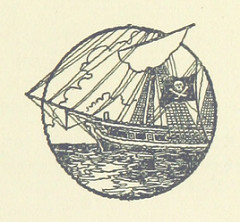Which nineteenth-century novels sold the most copies over their first few years? Part One on instant successes is here. Last week we took a dive into the nineteenth-century novels that saw the highest sales in their first few months after publication. This week, we’re going to look at novels that maintained brisk sales over their…
Tag: novels
The Bestselling English Novels of the 19th Century, Ranked: Part One
Which were the fastest-selling novels of nineteenth-century Britain? This blog has been around for a while now, and our stats have indicated that although you readers are quite partial to our wild ramblings about Jane Austen, there’s one question that you’re FAR more interested in. In fact, I’d venture that the vast majority of you…
Fun with Search Terms
Today, out of curiosity, I decided to take a peek at the search terms that people have found The Sea of Books with, over the year that our blog has been in existence. The results were intriguing, but suggest to me that I may want to think about doing some kind of search engine optimisation……
Jane Austen’s Social Networks
On July 18th two hundred years ago, at a house in Winchester, Jane Austen died at the relatively young age of 41. She had laid down her pen twelve chapters into her final novel (The Brothers, later published as Sanditon) in March of 1817, due to her worsening health, and it would remain unfinished. Her…
Insult of the Week: he talked mere drivel
The preacher in residence at St. Hilda’s Church in Donegal, Mr. Vivian, gets a poor review from Charlotte Riddell in her 1888 novel The Nun’s Curse. Although his good qualities are many, and he does excellent work with the sinful and/or suffering members of his parish, his preaching abilities are, frankly, nil. Unlearned, unlettered, uncultured…
Six Great 19th Century Novel Bakes
There are 62 references to cake so far in our 19th- century corpus, ranging from Jane Eyre’s slightly depressing “oaten-cakes” (also found in Shelley’s Frankenstein) to the more lavish offerings of plum-cake, plum-pudding, tea-cake, sponge-cake, and cheese-cake that appear in works by Dickens, Le Fanu and others. Here are a few of the most famous – although…
Image Collection of the Week: A Fleet of Sailing Ships
Today’s image collection comes in honour of that most solemn and dignified of annual celebrations: Talk Like A Pirate Day. And what better source of swashbuckling quotes is there than Robert Louis Stevenson’s formative pirate novel Treasure Island? Not only has this work given us such celebrated tropes as “Shiver my timbers!”, “Yo-ho-ho and a…
Insult of the Week: “…these bungling imitators”
In Chapter 11 of Maria Edgeworth’s Ennui, the narrator and Lady Geraldine go for a leisurely stroll around the ornamental buildings in the grounds at Ormsby Villa. On their travels, they happen upon Mrs. O’Connor, Lady Kilrush and “a troop of hoyden young ladies” and are promptly invited to view “a poetical inscription of Lady Kilrush’s,…
Insult of the Week: your desultory vivacity makes your presence a fatigue
In chapter 29 of Middlemarch, a letter from Mr. Casaubon’s cousin Will Ladislaw sparks off an argument between the elderly clergyman and his much younger wife, Dorothea: “You can, if you please, read the letter,” said Mr. Casaubon, severely pointing to it with his pen, and not looking at her. “But I may as well…
Literature, Lyrics and Lexical Diversity: What Do James Joyce, Sir Walter Scott and the Wu-Tang Clan Have in Common?
Inspired by this fascinating study of vocabulary in rap lyrics, by Matt Daniels at Polygraph, my colleague Derek Greene decided to take a similar dive into our own data. Which of our 46 novels includes the widest selection of unique words? I’ll let Derek explain this chart in his own words: I looked at the…
Insult of the Week: Fops
From one gendered insult to another: this week we’re looking at literary fops, or gentlemen that are – in some way or another – a bit too concerned with manners of dress, elegance and fashion. Our featured image (by the wonderful C. E. Brock) comes from John Galt’s 1821 novel The Annals of the Parish…
The Art of Beauty: To rouge or not to rouge
Throughout our corpus of nineteenth-century novels, there are numerous references to the transformative power of cosmetics. As well as striving to survive the noxious levels of lead and arsenic in your potions and pastes, you are also tasked with achieving socially acceptable levels of rouging. According to Madam Lola Montez’s 1858 book The Art of Beauty or…
